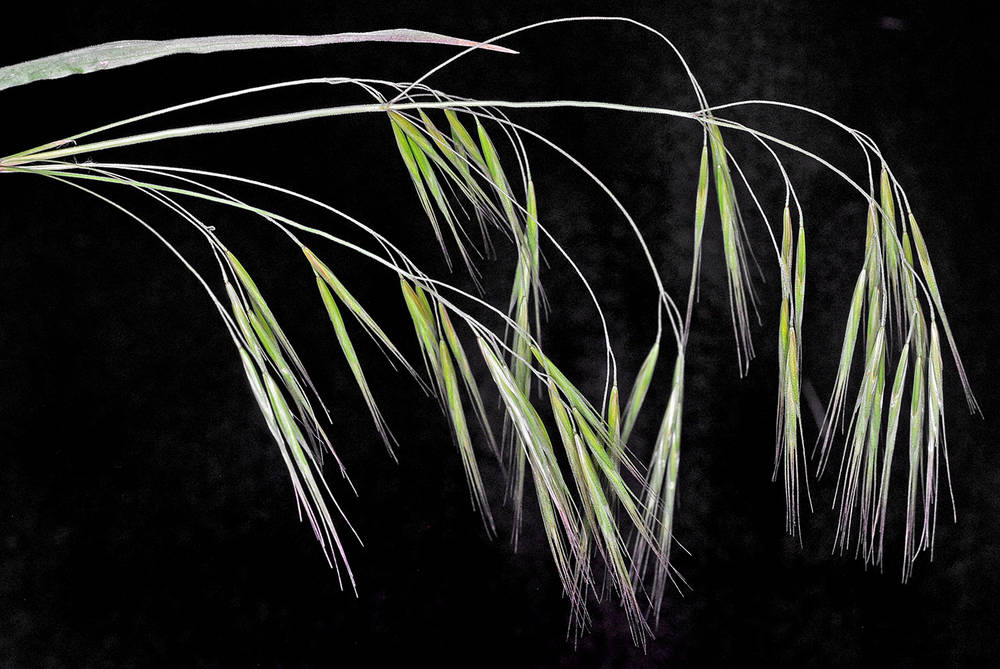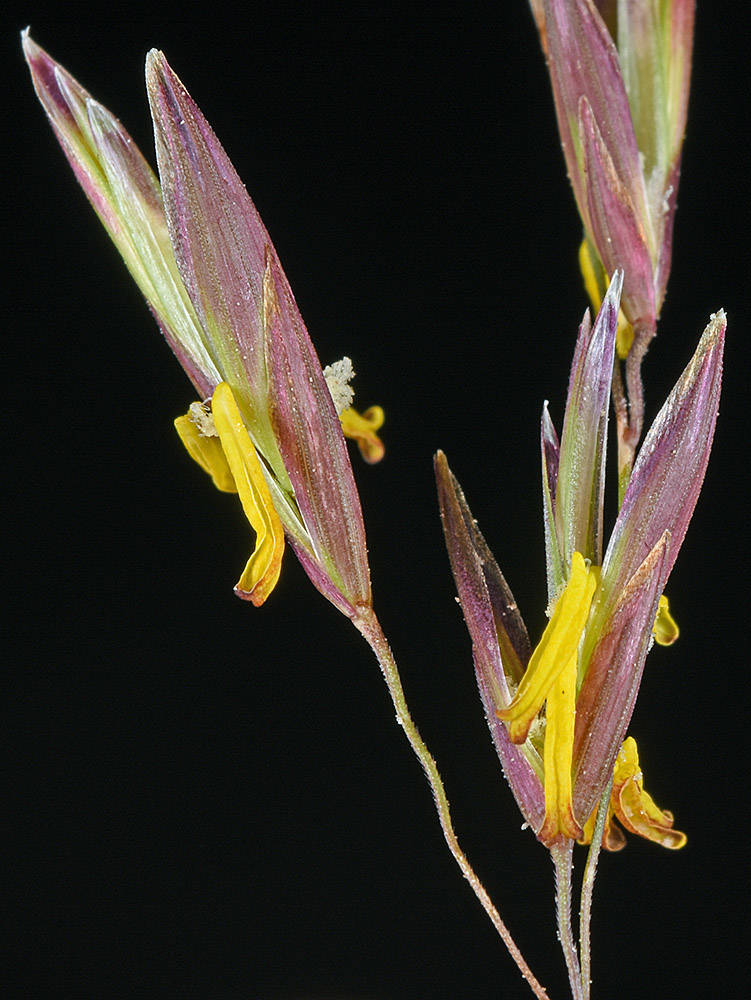Bromus tectorum
Bromus inermis
cheatgrass, downy brome, downy chess
smooth brome
puberulent.
internodes usually glabrous, rarely pubescent;
nodes (2)3–5(6), usually glabrous, rarely pubescent.
sheaths densely and softly retrorsely pubescent to pilose; upper sheaths sometimes glabrous;
blades 1–16 cm × 1–6 mm, softly hairy on both surfaces.
sheaths glabrous, rarely pubescent or pilose;
ligules to 3 mm;
blades 11–35(42) cm × 5–15 mm; flat, glabrous, rarely pubescent or pilose.
5–20 × 3–8 cm; open, nodding;
branches 1–4 cm, drooping, 1-sided and longer than the spikelets, usually at least 1 branch with 4–8 spikelets.
10–20 × 1–4(7)cm; open; erect;
branches ascending or spreading.
10–20 mm, moderately laterally compressed, not densely crowded, 4–8 florets.
20–40 mm, elliptic to lanceolate; terete to slightly laterally compressed; (5)8– 10 florets.
villous, pubescent, or glabrous;
lower glumes 4–9 mm, 1-veined;
upper glumes 7–13 mm, 3–5-veined.
glabrous;
lower glumes (4)6–9 mm, 1(3)-veined;
upper glumes (5)7–10 mm, 3-veined.
9–12 mm, lanceolate, glabrous or pubescent to pilose, 5–7-veined;
tips acuminate; hyaline; bifid, with teeth 0.8–2(3)mm, awned;
lemma awns 10–18 mm; straight.
9–13 mm, elliptic to lanceolate, rounded over the back, glabrous and smooth, occasionally scabrous; the basal part of the backs rarely puberulent;
margins sometimes sparsely puberulent;
tips acute to obtuse; entire; awnless or awned;
lemma awns if present 1–2(4)mm; straight.
0.5–1 mm.
3.5–6 mm.
=14.
=28, 42, 56.
Bromus tectorum
Bromus inermis
Disturbed areas, sagebrush steppe, degraded grasslands, roadsides. 0–2400 m. BR, BW, Casc, Col, CR, ECas, Lava, Owy, Sisk, WV. CA, ID, NV, WA; throughout North America; worldwide. Exotic.
Bromus tectorum is a relatively short grass with drooping inflorescences. Similar B. sterilis and B. diandrus have longer glumes, lemmas, and awns, and spikelets that hang down at a shallower angle than those of B. tectorum. The introduction of B. tectorum to shrub steppe habitats during a time of massive overgrazing in the late 1800s has made restoration of native plant communities difficult or impossible, even where grazing no longer occurs. Fast-growing B. tectorum seedlings outcompete slower growing native grass seedlings for water in drying soils. At maturity, the awns make B. tectorum unpalatable to livestock.
Mesic uplands, stream terraces, valley bottoms, open forests, roadsides, and ditches. 0–2400m. BW, Casc, Col, ECas, Lava, Owy, Sisk, WV. CA, ID, NV, WA; north to AK, east to Newfoundland and NC, south to Mexico; Eurasia. Exotic.
Rhizomatous B. inermis is most likely to be confused with two bromes that have been reported from Oregon but have not been confirmed. Bromus riparius has longer lemma awns, and its basal sheaths decay into a reticulate, thatch-like mass. It is an Asian species introduced for forage and recently collected from a roadside seeding in southwestern Oregon. Bromus pumpellianus is similar but has pubescent lemmas, nodes, and leaf blades.
Barbara Wilson, Richard Brainerd, Nick Otting
Barbara Wilson, Richard Brainerd, Nick Otting
- Local floras:
BC,
CA,
OR,
WA
- Local Web sites:
CalFlora,
CalPhotos,
Flora NW,
PNW Herbaria
WildflowerSearch
iNaturalist (observations)
USDA Plants Database
- LBJ Wildflower Center
- SEINet
- Plants of the World Online
- Encyclopedia of Life
- Wikipedia
- Google Image Search
- Local floras:
BC,
CA,
OR,
WA
- Local Web sites:
CalFlora,
CalPhotos,
Flora NW,
PNW Herbaria
WildflowerSearch
iNaturalist (observations)
USDA Plants Database
- LBJ Wildflower Center
- SEINet
- Plants of the World Online
- Encyclopedia of Life
- Wikipedia
- Google Image Search





